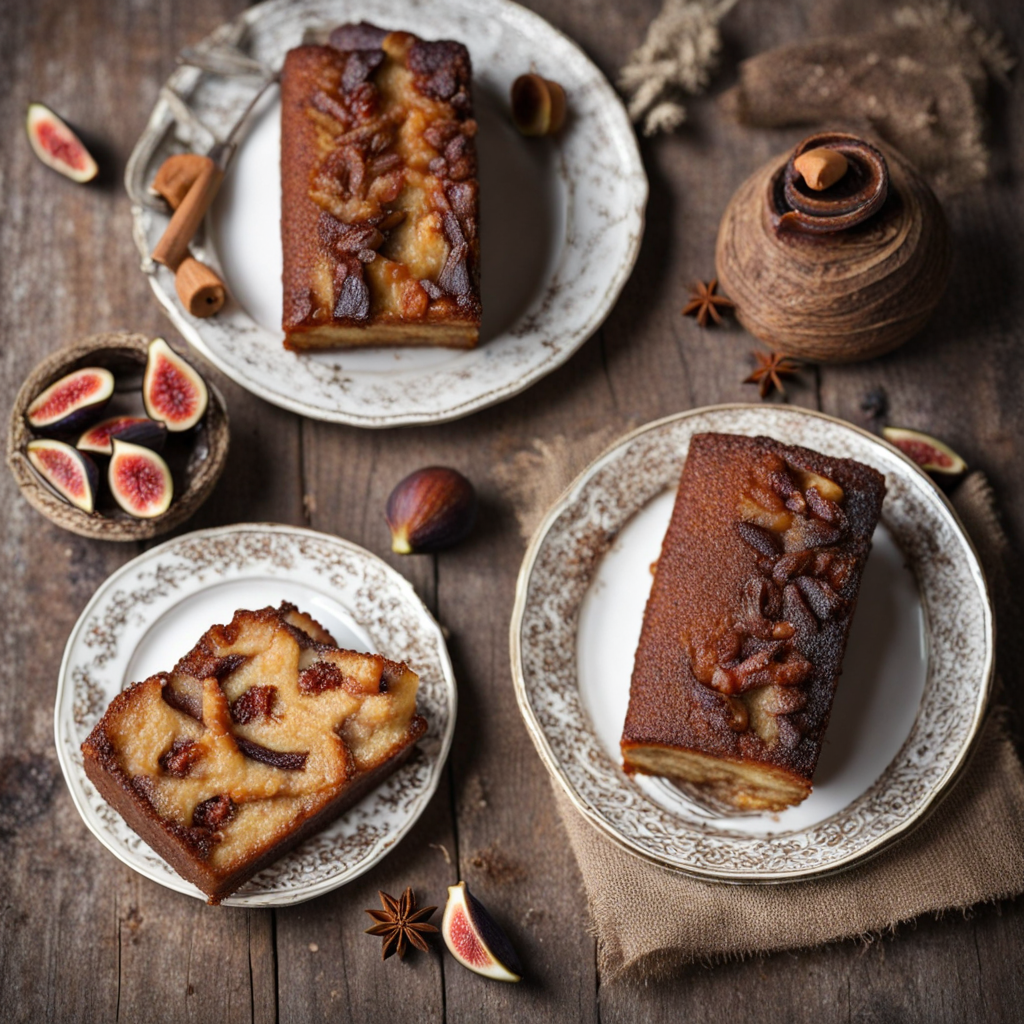Lokum
Lokum, often referred to as Turkish delight, is a traditional confection that has found a special place in the hearts and palates of those in Bosnia and Herzegovina. This delightful treat is made from a unique blend of sugar, starch, and flavorings, resulting in a chewy, gelatin-like consistency that melts in your mouth. The texture is smooth yet slightly sticky, offering a satisfying chew that invites you to savor each bite. Lokum is typically dusted with powdered sugar or desiccated coconut to prevent sticking, adding an extra layer of sweetness and visual appeal. What sets Lokum apart is its versatility in flavors and ingredients. While the classic varieties feature rosewater, lemon, or orange blossom, you can also find innovative versions infused with nuts such as pistachios and walnuts, or even fruit essences like pomegranate and cherry. Each bite offers a burst of flavor, ranging from floral and fruity notes to the nutty crunch of the added ingredients. The delightful combination of taste and texture makes Lokum a sensory experience that is both refreshing and indulgent. In Bosnia and Herzegovina, Lokum is often enjoyed during special occasions, celebrations, or as a sweet accompaniment to coffee or tea. It embodies the warm hospitality of the region, as it is frequently offered to guests as a gesture of welcome. Whether you are exploring the bustling bazaars or enjoying a quiet moment at a café, savoring Lokum is a delightful way to experience the rich culinary heritage of Bosnia and Herzegovina. Each piece of Lokum tells a story of tradition, craftsmanship, and the joy of sharing sweet moments with loved ones.
How It Became This Dish
The Sweet Legacy of Lokum: A Culinary Gem of Bosnia and Herzegovina Origins of Lokum Lokum, often known as Turkish delight in the English-speaking world, has a storied history that intertwines with the rich tapestry of Ottoman culture and the vibrant culinary traditions of the Balkans. Though the precise origin of lokum is often debated, its earliest recorded appearance dates back to the 15th century in the Ottoman Empire, where it was initially created as a soft, gelatinous confection made from sugar, starch, and flavorings. The word "lokum" is derived from the Arabic term "rahat al-hulkum," which translates to "comfort of the throat." This name reflects its initial purpose as a soothing sweet treat that was enjoyed by the elite. The confection was made with a simple mixture of water, sugar, and cornstarch, boiled together and flavored with various ingredients such as rosewater, lemon, or mastic. It was cut into cubes, dusted with powdered sugar or cornstarch, and served in decorative boxes, making it a popular gift. Cultural Significance In Bosnia and Herzegovina, lokum transcends mere confectionery; it is an emblem of hospitality and cultural identity. The preparation and serving of lokum is often ritualistic, especially during significant social gatherings, religious holidays, and family celebrations. When guests arrive, it is customary to offer them lokum alongside strong coffee or tea, a practice that showcases the Bosnian ethos of warmth and generosity. The significance of lokum is also interwoven with the region's history. As Bosnia and Herzegovina was part of the Ottoman Empire for several centuries, the culinary influences of this great empire permeated local traditions. Lokum became a staple in Bosnian households, symbolizing not just sweetness but also the blending of cultures, flavors, and traditions. The confection is often associated with the Islamic holy month of Ramadan, where it is enjoyed as a treat to break the fast. Development Over Time As the centuries progressed, the preparation of lokum in Bosnia and Herzegovina evolved, reflecting the region's local ingredients and tastes. While the classic versions made with rosewater and lemon are still prevalent, Bosnian artisans have also experimented with a variety of flavors and textures, incorporating local fruits, nuts, and spices. In the 19th century, as European influences began to permeate the Ottoman Empire, the production of lokum became more sophisticated. The introduction of new techniques and flavors led to an increased popularity of the sweet treat across the Balkans and beyond. Traditional recipes began to include nuts such as walnuts and hazelnuts, as well as the addition of cocoa powder for a chocolatey twist. The use of fruit juices and purees also became common, giving rise to vibrant flavors such as pomegranate, cherry, and fig. The early 20th century saw a further evolution in the production of lokum, with the establishment of specialized sweet shops in urban areas. These shops became social hubs where locals gathered to enjoy lokum along with coffee and conversation. The rise of these establishments marked a shift in how lokum was consumed; no longer just a homemade treat, it became a popular commodity, available to all segments of society. However, the tumultuous events of the 1990s, particularly the Bosnian War, had a profound impact on the cultural landscape of Bosnia and Herzegovina, including its culinary traditions. Many artisans were displaced, and traditional recipes and practices were at risk of being lost. Yet, amidst the challenges, the resilience of the Bosnian people shone through. Many sought to preserve their culinary heritage, including lokum, which became a symbol of hope and continuity in a time of uncertainty. In the years following the war, there was a renewed interest in traditional foods, leading to a renaissance of lokum production. Modern artisans began to embrace both traditional and innovative methods, using high-quality, locally sourced ingredients. This resurgence not only revitalized the lokum craft but also provided economic opportunities for artisans and small businesses. Lokum Today: A Bridge Between Cultures Today, lokum is celebrated not only in Bosnia and Herzegovina but also in various countries that were once part of the Ottoman Empire. It has found its way into international markets, gaining recognition as a delightful confection that transcends geographical boundaries. In Bosnia, lokum continues to be a cherished part of cultural heritage, often hand-crafted in small batches by dedicated artisans who uphold traditional methods while also embracing contemporary flavors. Moreover, lokum serves as a bridge between cultures. In Bosnia and Herzegovina, it is often paired with coffee, reflecting the deep-rooted coffee culture of the region. The combination of rich coffee and sweet lokum has become a quintessential part of social gatherings, reinforcing bonds among friends and family. The cultural significance of lokum has also been recognized beyond Bosnia and Herzegovina. It is increasingly featured in culinary festivals and events, where chefs and food enthusiasts come together to celebrate traditional sweets. Workshops and classes on lokum-making are becoming popular, allowing people to connect with the history and craft of this beloved confection. Conclusion Lokum is more than just a sweet treat; it embodies the spirit of Bosnia and Herzegovina, reflecting its history, culture, and resilience. From its humble origins in the Ottoman Empire to its modern-day status as a symbol of hospitality and cultural pride, lokum continues to delight palates and warm hearts. As the world becomes increasingly globalized, this delightful confection serves as a reminder of the importance of preserving culinary traditions and celebrating the diverse flavors that define our shared human experience. Whether enjoyed in a cozy Bosnian café or shared among friends, lokum remains a timeless treasure, weaving sweet stories across generations.
You may like
Discover local flavors from Bosnia And Herzegovina







